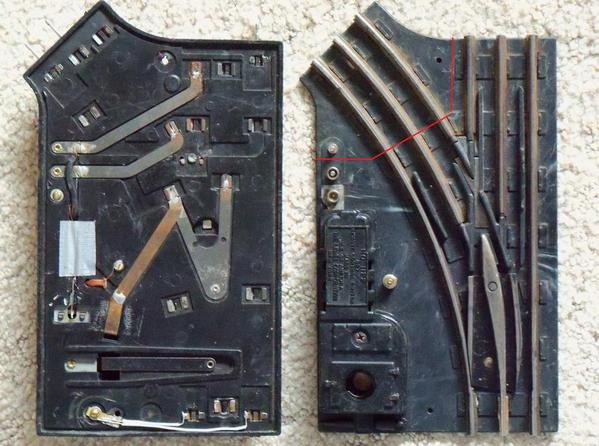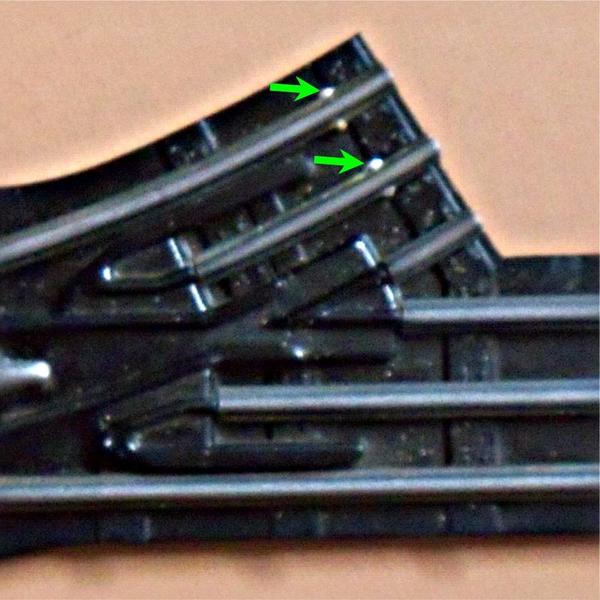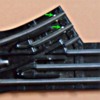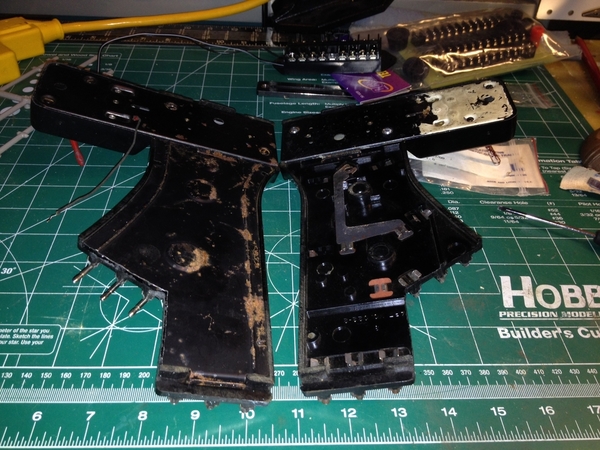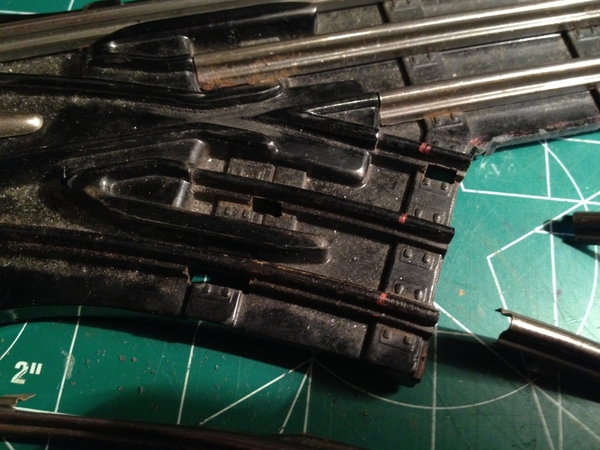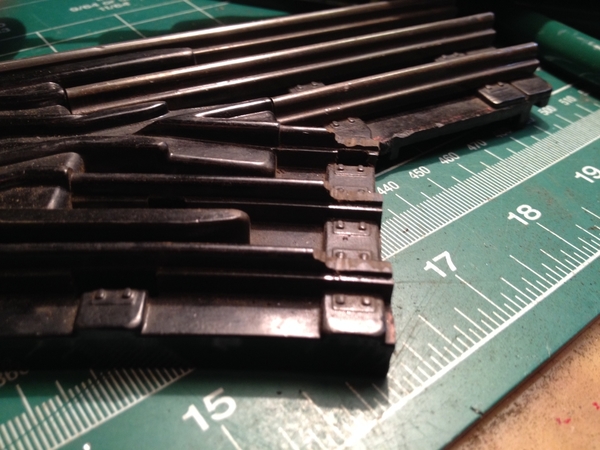On another thread there was a discussion about how to make the venerable old Lionel 022 (and 042) switches more useful for yards.
I thought a separate thread showing how I do this might be useful for anyone interested.
The standard geometry of an 022 switch is 10” long in the straight direction, and 45 degrees of curvature in the curved direction (ie. 8 curves make a circle). This is to match the standard O31 gauge track sections.
If these switches are used in a yard ladder they produce a 45 degree ladder track angle, and a yard track spacing of 7.07” C-C (28.3 scale feet). This is not very realistic, and takes up a lot of real estate.
If we cut 1/3 off the curved track length (15 degrees) we change the ladder track angle to 30 degrees, and the result is a track spacing of 5” C-C (20 scale feet). Much more realistic, plus we can get more sidings in our yard space.
If we go one step further and cut 2” off the straight leg, we shorten the switch to 8” and further reduce the yard track spacing to 4” C-C (16 scale feet). Now we are getting very close to prototypical yard track spacing.
Another advantage to reducing the curve-out is that when backing cars through these switches the angular change between cars is greatly reduced and derailments are less likely to occur. (You will still have a tenuous S curve while backing into the 2nd siding along the ladder.)
If we use two cut down switches for a loop crossover, we can reduce the parallel track spacing from 8-1/2” down to 4”; and greatly reduce the severity of the “S” curve.
We will need a few basic tools, including a power jig saw. Another handy (but not strictly necessary) tool is a Dremel with a flex shaft extension.
First we remove the bottom plate and the switch machine.
Then we mark the switch for cutting. The cut across the curved section is made just along the outer edge of the 3rd moulded “tie” from the end of the curve. This effectively removes 1/3 of the curve, or 15 degrees. The second intersecting cut is made parallel to and right alongside the straight track rail. (If you are also cutting down the straight track at this time, just make the second intersecting cut along the outer edge of the adjacent “tie” in the straight section.) If you check the underside of the base plate you should see that the intended cuts will not hit anything crucial on the underside.
Make the two cuts carefully using a fine tooth metal blade in your jig saw. You can also use a Dremel with a cut off wheel of course. Do not rush it, and be careful not to snag a rail. You can use a standard hacksaw, but again use a fine tooth blade.
After the cuts are done, file off any burrs and other debris with a fine file.
You will see that the rail heads at the cut off ends are filled with cast bakelite. This needs to be drilled out to make recesses for the track pins.
Clamp the switch securely using a wood block across the tops of the short rail segments. If this is not done the bakelite may cause the bit to deflect upwards and deform the short remaining rail segments. Clamping also helps to maintain drilling direction and alignment to the rails.
I made a custom block from a piece of plywood, with slots to fit the rails, but this is not mandatory. If you are going to do quite a few switches, however, you will find such a block very helpful.
You can use a cordless drill to drill out the bakelite, but a Dremel with a flex shaft works best and will give you much better control. Use a 7/64” drill bit; the same size as a standard O gauge track pin.
The holes only need to be drilled about ½” into the Bakelite. I use a piece of tape on the bit to indicate when the hole is deep enough. As you start, check vertical and horizontal position and alignment carefully, and proceed slowly. Bakelite is much harder to drill than plastic. Once started the bit should tend to follow the bakelite.
As you drill you should see mostly black powder from the bakelite. If you see a bunch of shiny metal filings, this means you are drilling into the side of the rail. Stop and re-align the drill. Once drilling is complete, recheck the rail ends for burrs, and install the track pins. Remember to install an insulated pin in the insulated rail segment.
Now repeat this procedure for the straight end if you are shortening it also.
During re-assembly I usually leave the bottom plate off of any modified switches, but you can make matching cuts in the bottom plate and re-install it if desired. The bottom plate serves as a protective cover when used on a temporary layout, but for a permanent layout it is not strictly necessary.
Note that if you are making a yard with several switches cut down in both the curved and straight sections (to get the minimum 4” spacing), you will have to trim a small triangular piece off the corner of the switch base to clear the track tie on the adjacent siding. This is also easily done with the jig saw, and will not affect switch operation.
If using 042 manual switches, I usually drill a small hole in the side of switch machine cover and feed the end of the bulb power wire through this during re-assembly. I then use this wire to provide lantern light power, so that the switch lights up along with other remote controlled switches on the layout, instead of relying on track power.
Here is a switch with both the curved and straight rails cut:
This is a yard made of 042 switches cut down to give 5" C-C track spacing:
Once you have done one or two you will be an expert. It takes about 15-20 minutes per switch once you are set up.
Have fun!
Rod




